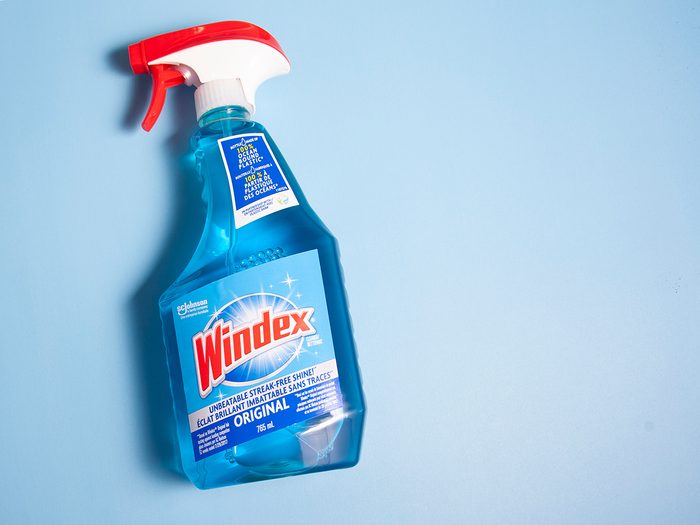
Clever Uses For Windex
Right now, there’s probably a bottle of Windex in your cabinet alongside dozens of other cleaning products. Maybe you only reach for it to clean your glass, mirrors or crystal. But did you know Windex has myriad other cleaning uses beyond these traditional ones?
From repelling bugs to unsticking zippers, the cleaning powerhouse is far from a one-trick pony. These 10 unexpected uses for Windex will revolutionize your cleaning routine and save you valuable money on single-purpose cleaning products.
Just remember: Don’t use Windex on any of these household surfaces, as its ammonia-based formula can damage them. Happy cleaning!
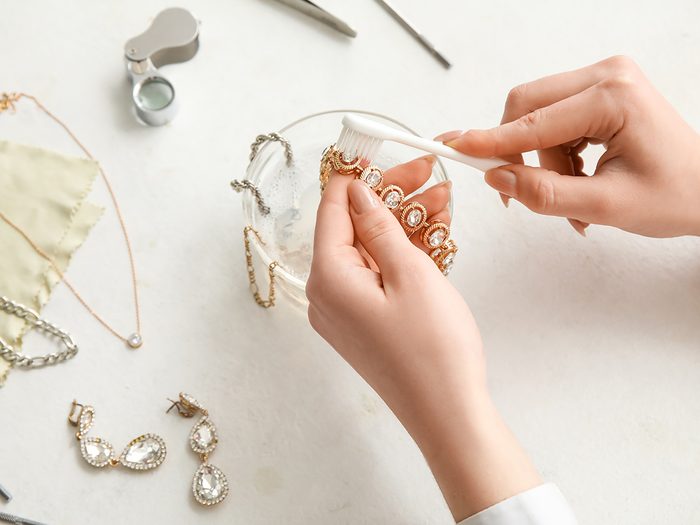
Polishing Jewelry
A spritz of Windex works wonders as a cleaning agent for metal jewelry and non-porous gemstones.
Before you start cleaning, make sure your piece doesn’t contain porous gems like opals or emeralds. Then, spray Windex onto the jewelry over a bowl. Let the piece sit for one minute before rinsing with cool water. You can also use a toothbrush to scrub the Windex onto pieces with tougher stains.
Don’t miss these clever tricks for cleaning silver.
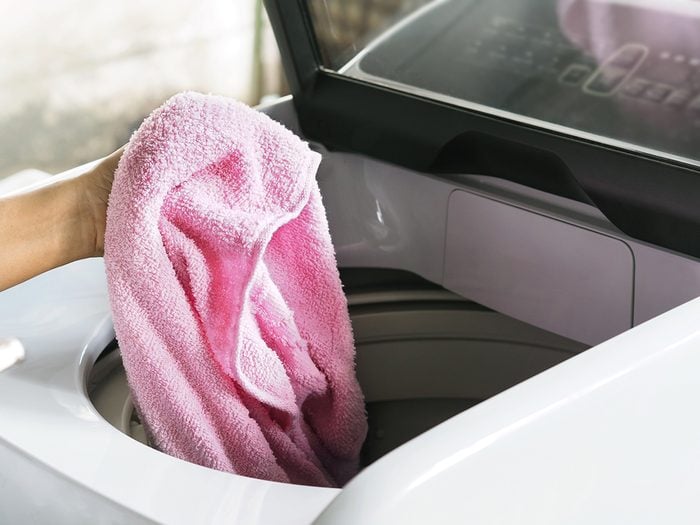
Removing Stains
Speaking of stains, Windex is clothing’s best friend. Spray the Windex onto a fabric stain and let it rest for 15 minutes. Blot off any excess with a clean cloth, rinse with cool water, then wash normally.
Notes: This laundry hack works best with colourless Windex. Don’t attempt this on delicate fabrics like silk. And never use Windex in combination with bleach, which can create toxic gas.

Killing and Repelling Insects
According to Upstairs Downstairs Cleaning, Windex makes an excellent bug killer. Simply spray any pests you’d like to eliminate, or spray the edges of doors and windows to keep them out.
However, don’t use this technique on stinging insects like wasps. Windex won’t instantly kill an insect, so you run the risk of angering them further and provoking a sting.
Here’s the best way to get rid of fungus gnats.
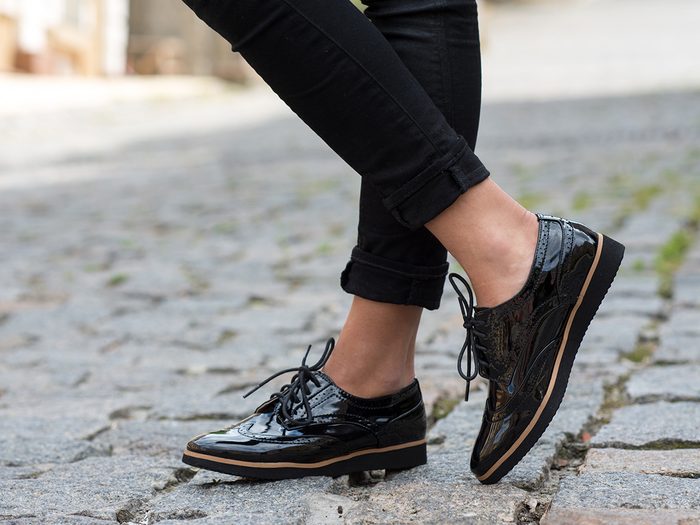
Shining Shoes
If you have any patent leather shoes in your closet, Windex will return them to factory-level shine. Just don’t use it on real leather shoes, because it will damage the delicate hide. When cleaning real leather, look for proper polish, conditioner and dubbin.
Discover 10 DIY tricks to deodorize shoes.
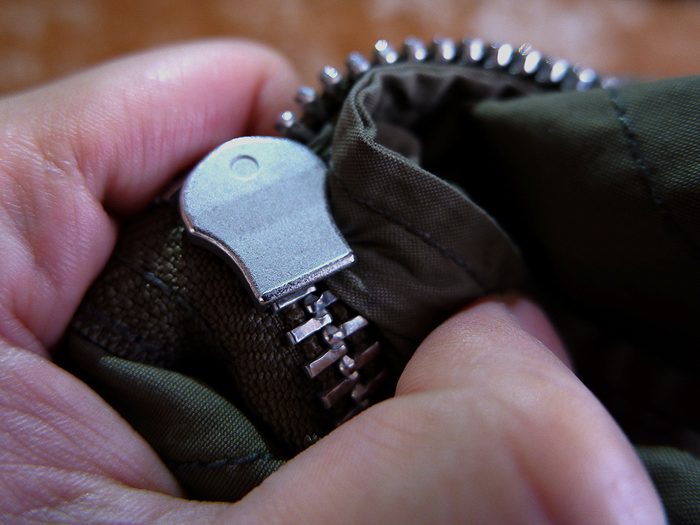
Unsticking Zippers
Does your jacket have a sticky zipper, rendering it unusable? Windex to the rescue!
To unjam a zipper, Southern Living suggests giving it a “small spritz,” letting it sit for a moment, then wiggling the zipper pull to get the Windex inside all the nooks and crannies. Voilà: your zipper will be good as new.
Check out more dollar store solutions for life’s little dilemmas.
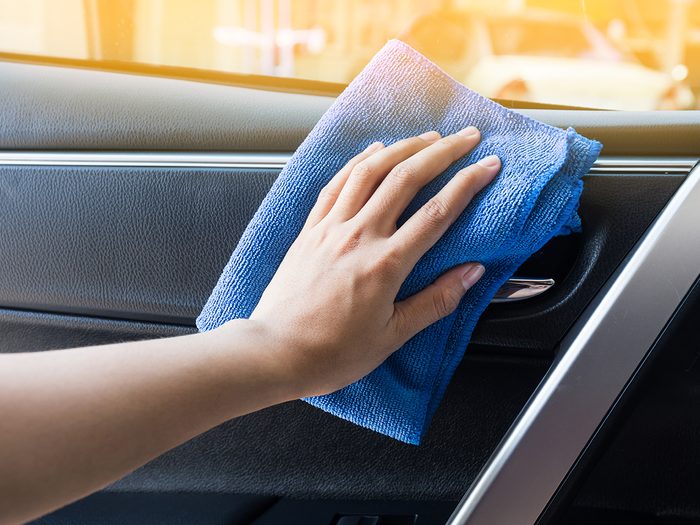
Cleaning Car Interiors
While it’s no surprise Windex can be used on car windows, many drivers may not think to use it elsewhere in the vehicle. Windex’s non-greasy formula makes it perfectly suited to clean car interior plastic, leather and upholstered surfaces.
Use it to clean the dashboard, steering wheel, air vents, seats and even any faux wood accents. Remember: Windex should not be used on real wood!

Wipe Off Whiteboards
You don’t need a specialized product to get a squeaky-clean whiteboard. Take off any marker residue or dust with a few spritzes of Windex and a rag.
According to the whiteboard company EverWhite, Windex may even remove permanent marker when you let it rest on the marks for a couple of minutes.
Find out what professional cleaners do every day to keep their own homes spotless.
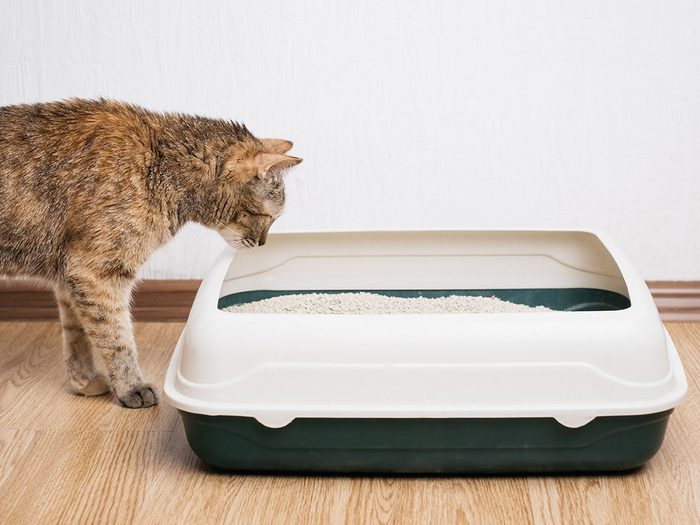
Refreshing Litter Boxes
Cleaning the litter box is never a fun task. But it can go a little more smoothly with the help of Windex.
Next time you go to change the cat litter, try using Windex to clean the box itself. This can prevent the buildup of dust and urine, reducing unwanted odours.
Find out the most common mistakes cat owners make, according to The Cat Whisperer.
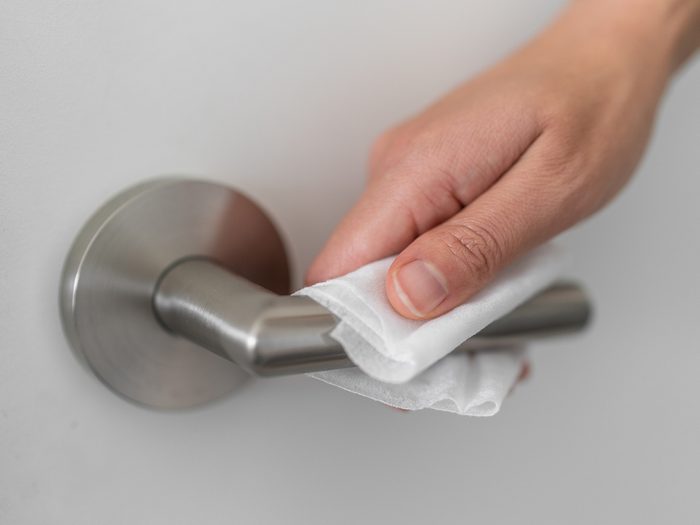
Disinfecting Doorknobs
Doorknobs are one of the grimiest surfaces in your entire house. Windex’s solvents can dissolve any dust or grease on your doorknob, disinfect it and make it beautifully shiny. Just spray the knob with Windex and buff it with a lint-free cloth.
Here are more clever uses for ammonia all around the house.
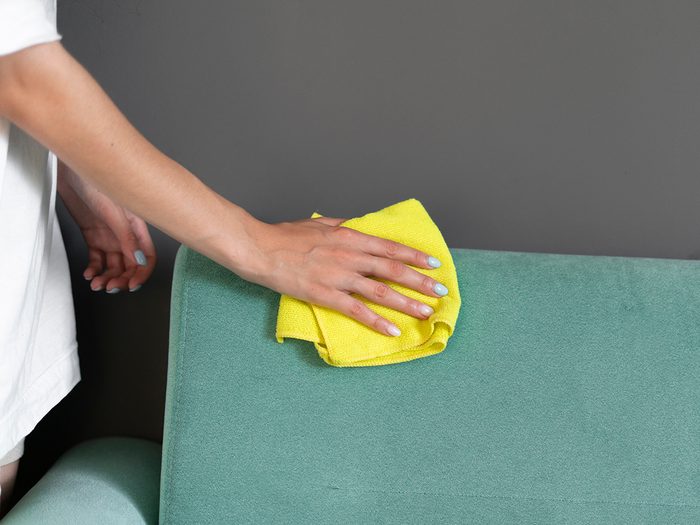
Cleaning Upholstery
Windex is also a lifesaver for synthetic microfibres. While this upholstery material has skyrocketed in popularity due to its durability, it can stain easily, even from water.
To treat stains on microfibre furniture, spray lightly with Windex, then gently scrub the surface with a soft-bristled brush. Be sure not to soak the upholstery, which can further damage the material. If the stain is particularly stubborn, repeat the process.
Next, check out 13 cleaning hacks that take the hassle out of housekeeping.